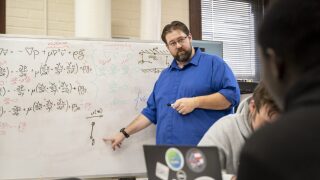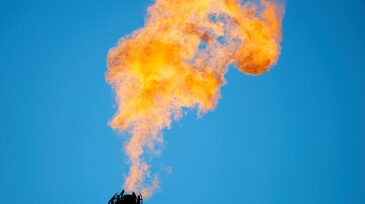Technology
PE Ltd.'s software will allow students and faculty to work directly with modeling technologies and build real-world, job-ready skills.
Founding dean of Missouri S&T’s Kummer College, James D. Sterling, sat down with Joshua Schlegel, associate professor and associate chair of nuclear engineering and radiation science, to discuss why nuclear power is making a comeback and what its resurgence means for the future of energy.
In this interview, Purohit explains why ultrasonic technology is rising as a dominant solution for gas-flow applications and how engineering teams can approach measurement as a tool not just for accountability but also for operational excellence.
-
The Nigerian National Petroleum Corporation announced a three-point smart strategy aimed at ending gas flaring in Nigeria’s oil and gas industry in 2 years.
-
Matt Balhoff, associate professor at the University of Texas Petroleum and Geosystems Engineering Department, shares the latest advances in his research on enhanced oil recovery.
-
In drilling, more often than not, automation and optimization are independently addressed. Artificial intelligence can be the bridge between the two.
-
Climate change has brought the oil industry face-to-face with the enormous challenge of providing the world with a source of efficient and reliable energy while at the same time ensuring that CO2 emissions are mitigated.
-
There is a big prize to be claimed in enhanced shale and tight oil recovery.
-
For 60% of Sub-Saharan Africa and South Asia, by cultivated land area, an acute challenge is access to water. Irrigation in such areas is limited because of lack of innovation in drilling methods. Here's a case where the knowledge from oil drilling led to improvements in borewell drilling.
-
Energy.gov, 3 January. The US Department of Energy (DOE) has announced the selection of six projects to receive approximately $30 million in federal funding for cost-shared research and development in unconventional oil and natural gas recovery.
-
Nonaqueous drilling fluids have been used extensively by the industry, particularly in complex drilling scenarios. They carry some concerns, however, with implications for well integrity.
-
Public perceptions matter. The industry needs to take a proactive and solution-centric position with respect to the Paris Agreement and join the battle for the clean and affordable kilowatts of energy the markets will increasingly favor.
-
By the end of 2018, Western Australia will be exporting nearly 50 million tonnes per annum of LNG. This is an exciting time for the young professionals lucky enough to call Perth their home.













